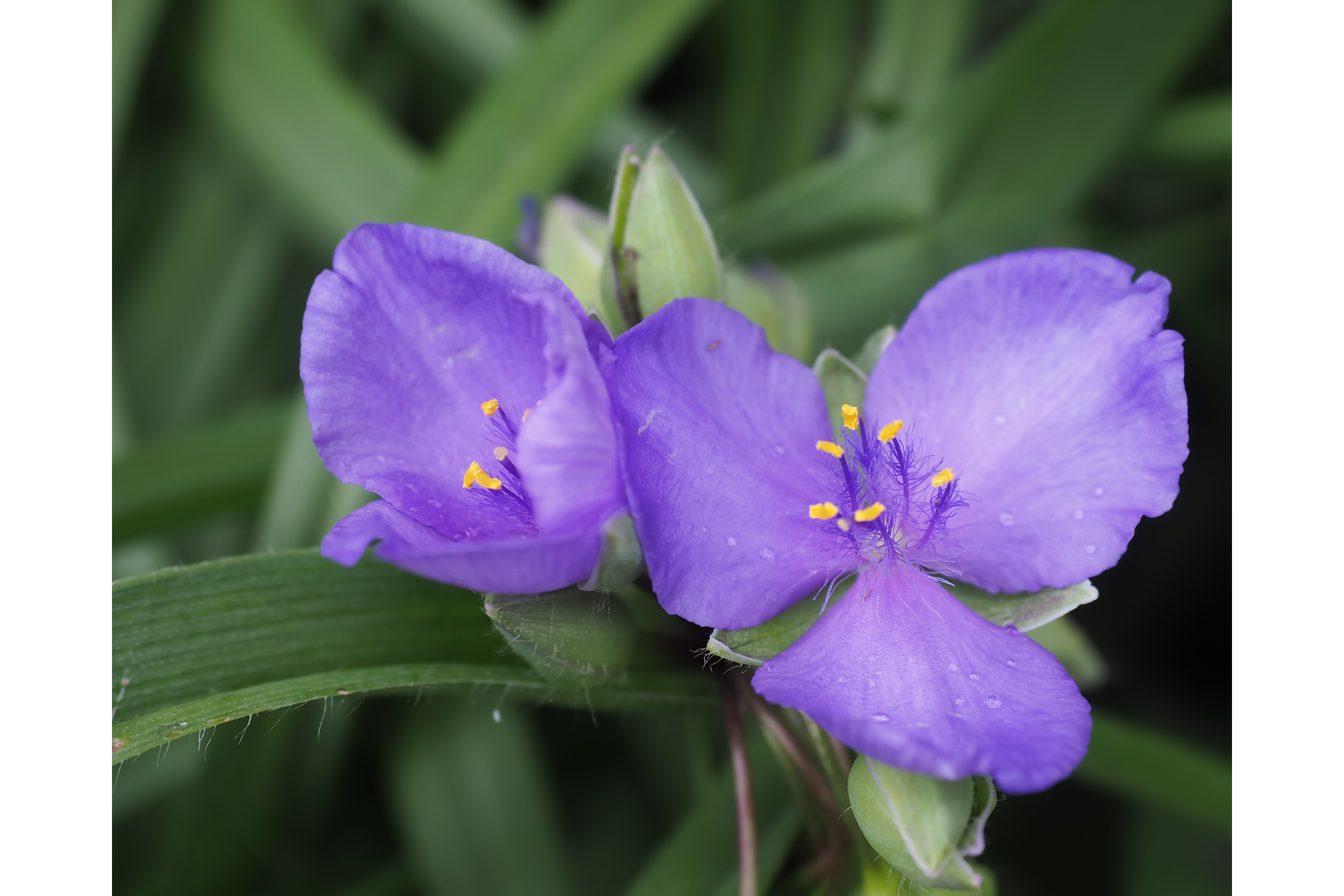Virginia spiderwort
(Tradescantia virginiana)

Description
Tradescantia virginiana, commonly known as Virginia spiderwort, is a perennial plant that belongs to the Commelinaceae family. It is native to North America and can be found in wetlands, woodlands, and prairies. Virginia spiderwort is a hardy plant that is easy to grow and maintain, making it a popular choice among gardeners. This article will provide detailed information about the physical characteristics, habitat, cultivation, and propagation of Tradescantia virginiana. Physical Characteristics Virginia spiderwort is a herbaceous perennial that grows up to 60 cm tall. It has a clump-forming habit and produces numerous unbranched stems from a central crown. The leaves of Virginia spiderwort are long and narrow, measuring about 10-30 cm in length and 1-3 cm in width. They are smooth and have a blue-green color. The plant produces three-petaled flowers that are clustered at the tips of the stems. The flowers bloom in shades of pink, purple, and blue, and they have a central stamen that is covered with yellow pollen. Habitat Tradescantia virginiana is native to North America and can be found in a wide range of habitats, including wetlands, woodlands, and prairies. It is a hardy plant that can tolerate a range of soil types and moisture conditions. Virginia spiderwort prefers moist, well-draining soil and partial shade, although it can tolerate full sun in cooler climates. It is commonly found growing along roadsides, in meadows, and in open woods. Cultivation Virginia spiderwort is an easy-to-grow plant that requires minimal maintenance. It can be propagated by seed, division, or cuttings. When planting Virginia spiderwort, it is important to select a site with moist, well-draining soil and partial shade. The plant can be propagated by seed, division, or cuttings. Propagation by seed: Virginia spiderwort produces small black seeds that can be harvested from the plant after the flowers have faded. The seeds can be sown directly into the soil in the spring or fall, or they can be started indoors and transplanted outdoors once the weather warms up. Propagation by division: Virginia spiderwort can be propagated by dividing the plant in the spring or fall. To do this, dig up the plant and separate the clumps into smaller sections. Each section should have a healthy root system and several stems. Propagation by cuttings: Virginia spiderwort can also be propagated by stem cuttings. Take a 5-10 cm cutting from a healthy stem, remove the lower leaves, and plant the cutting in moist soil. Keep the soil moist and provide partial shade until the cutting has rooted. Maintenance: Virginia spiderwort requires minimal maintenance once established. It should be watered regularly during dry spells and fertilized in the spring with a balanced fertilizer. The plant can be trimmed back after flowering to encourage bushier growth and to prevent self-seeding. Pests and Diseases Virginia spiderwort is a hardy plant that is relatively resistant to pests and diseases. However, it can be susceptible to fungal diseases if grown in overly wet conditions. Powdery mildew and leaf spot are two common fungal diseases that can affect Virginia spiderwort. These can be treated with fungicides or by removing infected plant parts. Conclusion Tradescantia virginiana, or Virginia spiderwort, is a hardy and easy-to-grow perennial plant that is native to North America. It is a popular choice among gardeners for its attractive flowers and low-maintenance requirements. Virginia spiderwort can be propagated by seed, division, or cuttings and requires minimal maintenance once established. With proper care, Virginia spiderwort can provide years of beauty and enjoyment.
Taxonomic tree:







